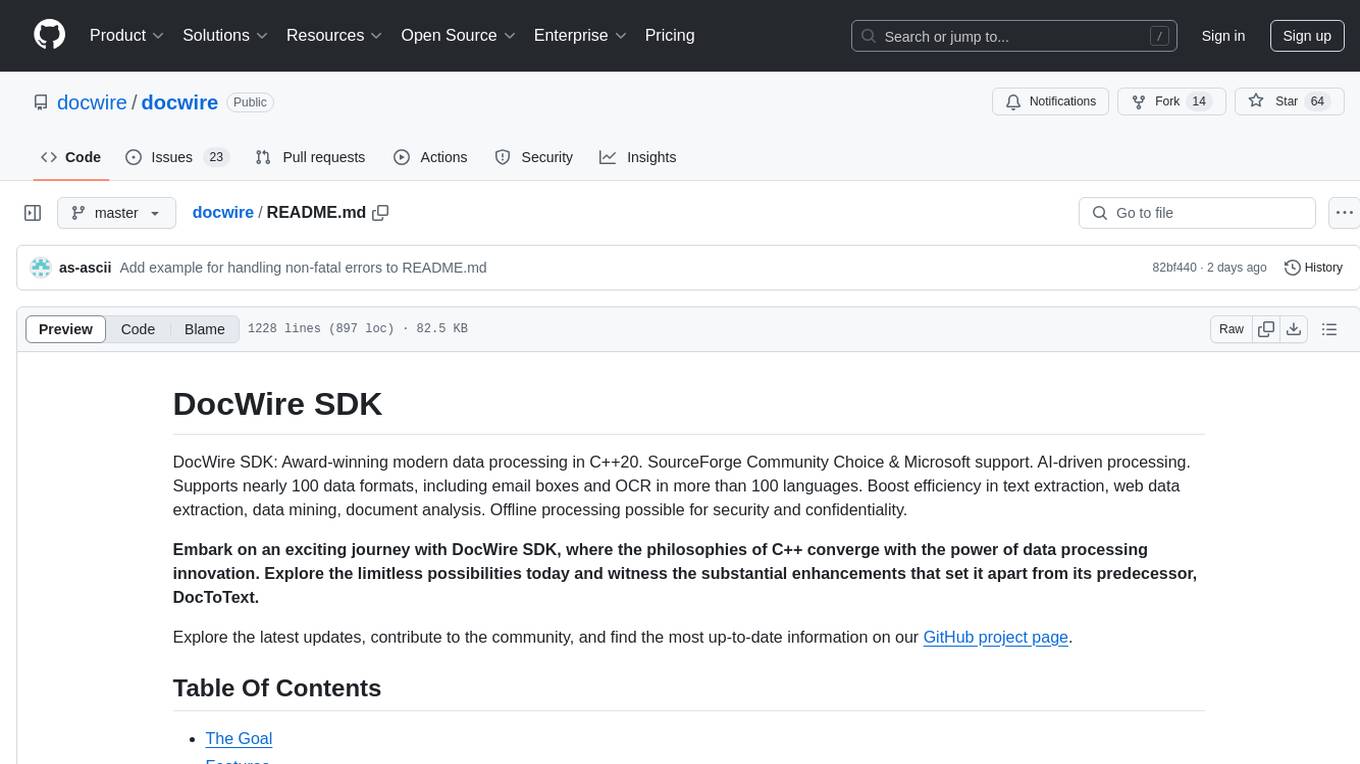
codebase-context-spec
Proposal for a flexible, tool-agnostic, codebase context system that helps teach AI coding tools about your codebase. Super easy to get started, just create a .context.md file in the root of your project.
Stars: 75
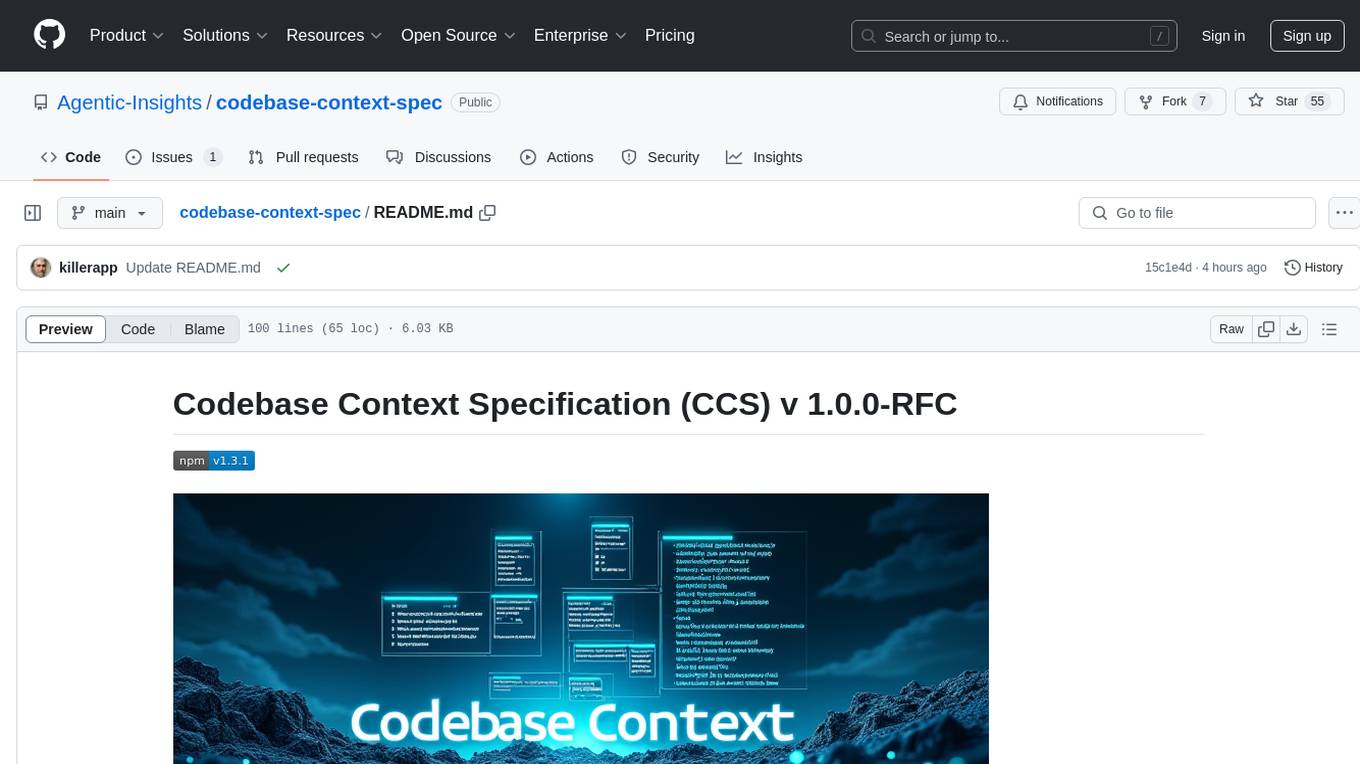
The Codebase Context Specification (CCS) project aims to standardize embedding contextual information within codebases to enhance understanding for both AI and human developers. It introduces a convention similar to `.env` and `.editorconfig` files but focused on documenting code for both AI and humans. By providing structured contextual metadata, collaborative documentation guidelines, and standardized context files, developers can improve code comprehension, collaboration, and development efficiency. The project includes a linter for validating context files and provides guidelines for using the specification with AI assistants. Tooling recommendations suggest creating memory systems, IDE plugins, AI model integrations, and agents for context creation and utilization. Future directions include integration with existing documentation systems, dynamic context generation, and support for explicit context overriding.
README:
Welcome to the Codebase Context Specification (CCS) repository! This project establishes a standardized method for embedding rich contextual information within codebases to enhance understanding for both AI and human developers. By providing a clear and consistent way to communicate project structure, conventions, and key concepts, we significantly improve code comprehension and facilitate more effective collaboration between humans and AI in software development.
- Full Specification (CODEBASE-CONTEXT.md)
- GitHub Repository
- NPM Package (codebase-context-lint)
- SubStack Article by Vaskin
- Context File Example (.context.md)
- AI Assistant Prompt (CODING-ASSISTANT-PROMPT.md)
To install the Codebase Context Linter globally, use npm:
npm install -g codebase-context-lintAfter global installation, you can use the codebase-context-lint command to lint your project:
codebase-context-lint [directory_to_lint] [options]You can also use npx to run the linter without installing it globally:
npx codebase-context-lint [directory_to_lint] [options]If no directory is specified, the linter will default to the current directory.
Options:
-
--log-level <level>: Set the logging level (error, warn, info, debug). Default: info -
--help,-h: Show the help message
Examples:
codebase-context-lint
codebase-context-lint .
codebase-context-lint /path/to/project --log-level debug
npx codebase-context-lint
npx codebase-context-lint /path/to/project --log-level debugThe linter will validate your .context.md, .context.yaml, .context.json, .contextdocs.md, and .contextignore files according to the Codebase Context Specification.
You can also use the Codebase Context Linter as a library in your TypeScript or JavaScript projects:
import { ContextLinter, LogLevel } from 'codebase-context-lint';
const linter = new ContextLinter(LogLevel.INFO);
const isValid = await linter.lintDirectory('/path/to/your/project', '1.0.0');
console.log(`Linting result: ${isValid ? 'Valid' : 'Invalid'}`);Note: The linter will automatically create any necessary directories when writing files.
To help you get started with creating context files for your project, we've developed the Codebase Context Editor. This tool simplifies the process of generating .context.md, .contextdocs.md, and .contextignore files that adhere to the Codebase Context Specification.
Get Started with the Codebase Context Editor
The Codebase Context Editor provides an intuitive interface for:
- Creating and editing context files
- Viewing and copying AI prompts for context generation
- Validating your context files against the specification
Whether you're new to the Codebase Context Specification or an experienced user, the editor can significantly streamline your workflow.
This project supports the following Node.js versions:
- Node.js 18.x
- Node.js 20.x
- Node.js 22.x
We recommend using the latest LTS (Long Term Support) version of Node.js for optimal performance and security.
The Codebase Context Specification introduces a convention similar to .env and .editorconfig systems, but focused on documenting your code for both AI and humans. Just as .env files manage environment variables and .editorconfig ensures consistent coding styles, CCS files (.context.md, .context.yaml, .context.json) provide a standardized way to capture and communicate the context of your codebase.
This convention allows developers to:
- Document high-level architecture and design decisions
- Explain project-specific conventions and patterns
- Highlight important relationships between different parts of the codebase
- Provide context that might not be immediately apparent from the code itself
By adopting this convention, teams can ensure that both human developers and AI assistants have access to crucial contextual information, leading to better code understanding, more accurate suggestions, and improved overall development efficiency.
- Contextual Metadata: Structured information about the project, its components, and conventions, designed for both human and AI consumption.
- AI-Human Collaborative Documentation: Guidelines for creating documentation that's easily parsed by AI models while remaining human-readable and maintainable.
-
Standardized Context Files: Consistent use of
.context.md,.context.yaml, and.context.jsonfiles for conveying codebase context at various levels (project-wide, directory-specific, etc.). - Context-Aware Development: Encouraging a development approach that considers and documents the broader context of code, not just its immediate functionality.
We've recently updated our dependencies to address security vulnerabilities and improve compatibility with different Node.js versions. If you encounter any issues after updating, please report them in our GitHub issues.
The CODING-ASSISTANT-PROMPT.md file provides guidelines for AI assistants to understand and use the Codebase Context Specification. This allows for immediate adoption of the specification without requiring specific tooling integration.
To use the Codebase Context Specification with an AI assistant:
- Include the content of CODING-ASSISTANT-PROMPT.md in your prompt to the AI assistant.
- Ask the AI to analyze your project's context files based on these guidelines.
- The AI will be able to provide more accurate and context-aware responses by following the instructions in the prompt.
Note that while this approach allows for immediate use of the specification, some features like .contextignore should eventually be applied by tooling for more robust implementation.
Developers are encouraged to create:
- Memory systems using git branches as storage
- IDE plugins for context file creation and editing
- AI model integrations for parsing and utilizing context
- Tools for aggregating and presenting project-wide context
- Agents that can help create context in codebases that are blank
- Codebase summarizers, submodule summarizers
- Memory systems that take advantage of the context
- Continuous TODO monitors that can re-try implementations / solutions
- Integration with existing documentation systems
- Dynamic context generation through code analysis
- Potential support for explicit context overriding
- Agent tool / context matching and references
We welcome contributions and feedback from the community to help shape the final specification. Here's how you can get involved:
- Review the Specification: Start by thoroughly reading the current specification in CODEBASE-CONTEXT.md.
- Open an Issue: For suggestions, questions, or concerns, open an issue in this repository.
- Submit a Pull Request: For proposed changes or additions, submit a pull request with a clear description of your modifications.
- Join the Discussion: Participate in open discussions and provide your insights on existing issues and pull requests.
All contributions will be reviewed and discussed openly. Significant changes may go through an RFC (Request for Comments) process to ensure thorough consideration and community input.
- 1.0.0-RFC: Initial RFC release of the Codebase Context Specification
For a deeper dive into the Codebase Context Specification, check out this SubStack article by Vaskin, the author of the specification.
For Tasks:
Click tags to check more tools for each tasksFor Jobs:
Alternative AI tools for codebase-context-spec
Similar Open Source Tools

codebase-context-spec
The Codebase Context Specification (CCS) project aims to standardize embedding contextual information within codebases to enhance understanding for both AI and human developers. It introduces a convention similar to `.env` and `.editorconfig` files but focused on documenting code for both AI and humans. By providing structured contextual metadata, collaborative documentation guidelines, and standardized context files, developers can improve code comprehension, collaboration, and development efficiency. The project includes a linter for validating context files and provides guidelines for using the specification with AI assistants. Tooling recommendations suggest creating memory systems, IDE plugins, AI model integrations, and agents for context creation and utilization. Future directions include integration with existing documentation systems, dynamic context generation, and support for explicit context overriding.
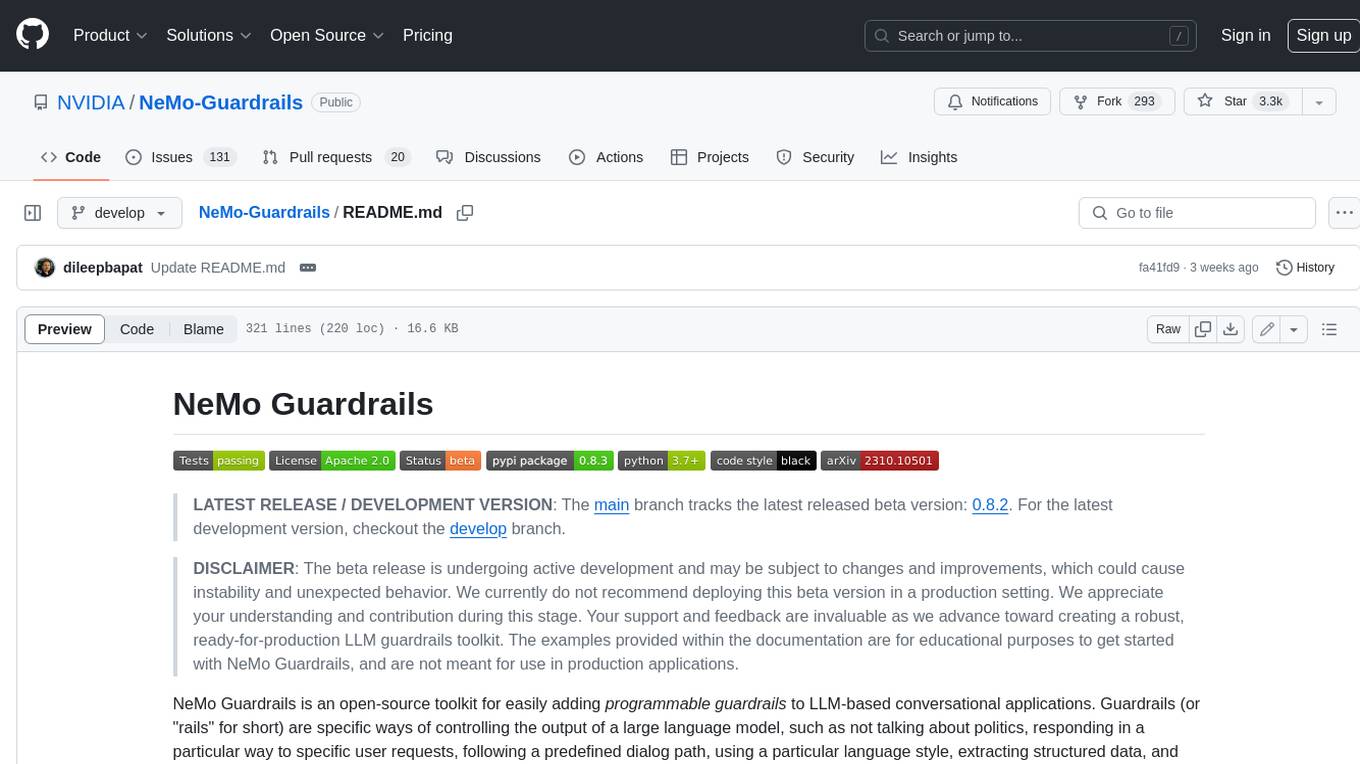
Guardrails
Guardrails is a security tool designed to help developers identify and fix security vulnerabilities in their code. It provides automated scanning and analysis of code repositories to detect potential security issues, such as sensitive data exposure, injection attacks, and insecure configurations. By integrating Guardrails into the development workflow, teams can proactively address security concerns and reduce the risk of security breaches. The tool offers detailed reports and actionable recommendations to guide developers in remediation efforts, ultimately improving the overall security posture of the codebase. Guardrails supports multiple programming languages and frameworks, making it versatile and adaptable to different development environments. With its user-friendly interface and seamless integration with popular version control systems, Guardrails empowers developers to prioritize security without compromising productivity.
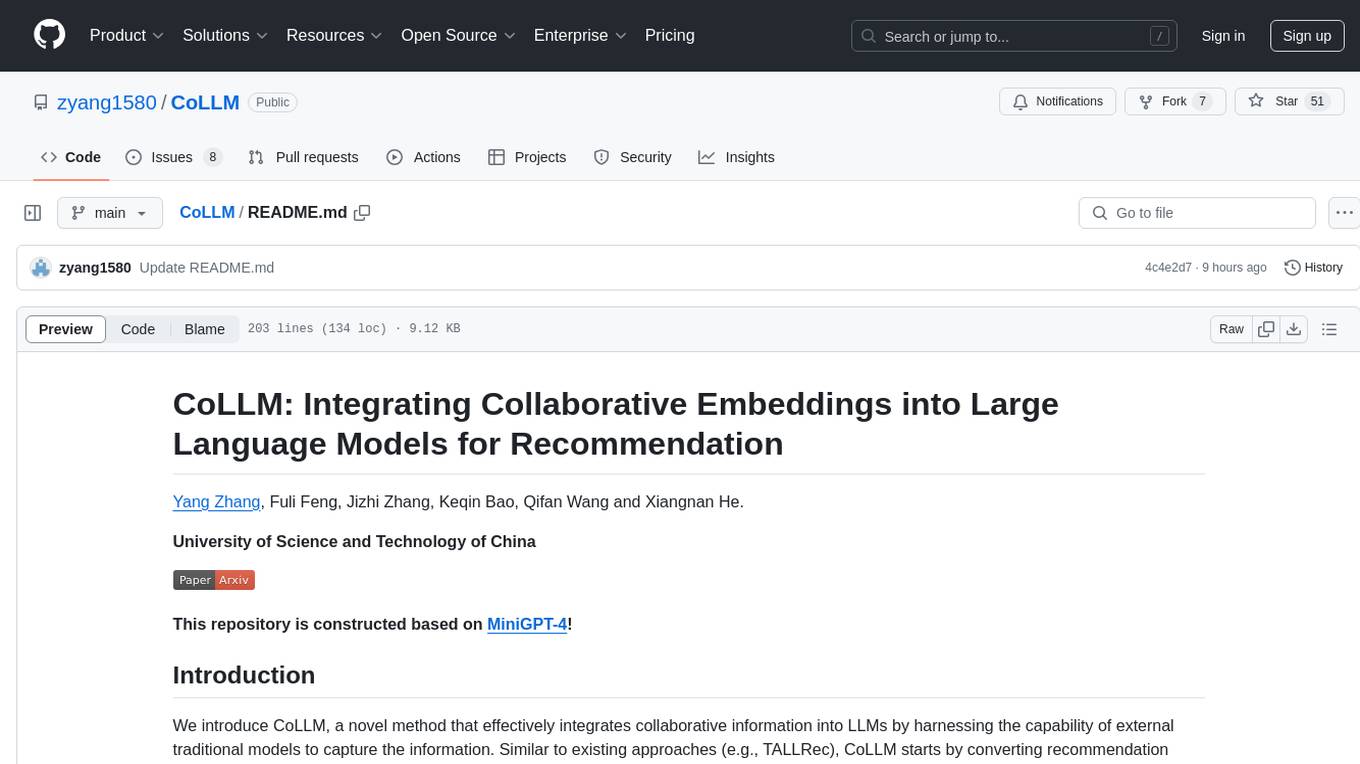
CoLLM
CoLLM is a novel method that integrates collaborative information into Large Language Models (LLMs) for recommendation. It converts recommendation data into language prompts, encodes them with both textual and collaborative information, and uses a two-step tuning method to train the model. The method incorporates user/item ID fields in prompts and employs a conventional collaborative model to generate user/item representations. CoLLM is built upon MiniGPT-4 and utilizes pretrained Vicuna weights for training.
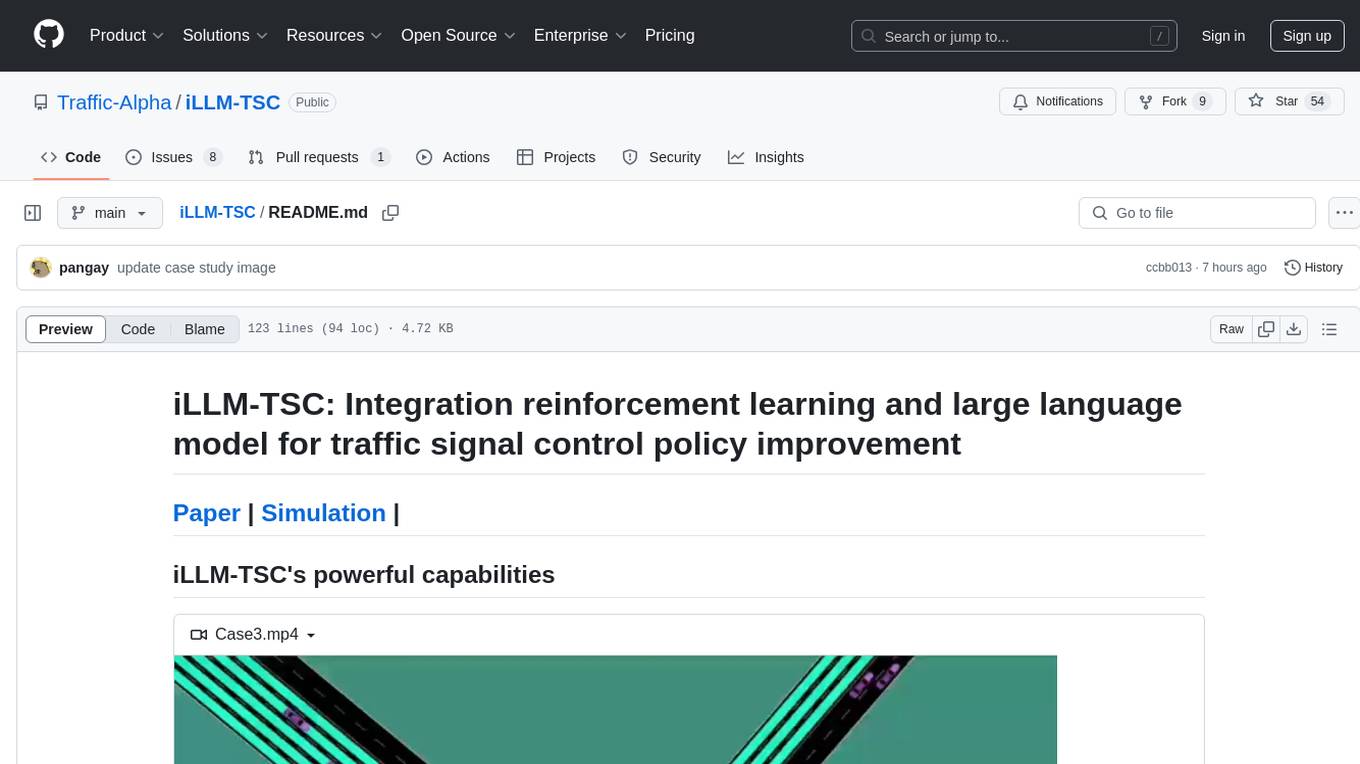
iLLM-TSC
iLLM-TSC is a framework that integrates reinforcement learning and large language models for traffic signal control policy improvement. It refines RL decisions based on real-world contexts and provides reasonable actions when RL agents make erroneous decisions. The framework includes cases where the large language model provides explanations and recommendations for RL agent actions, such as prioritizing emergency vehicles at intersections. Users can install and run the framework locally to train RL models and evaluate the combined RL+LLM approach.
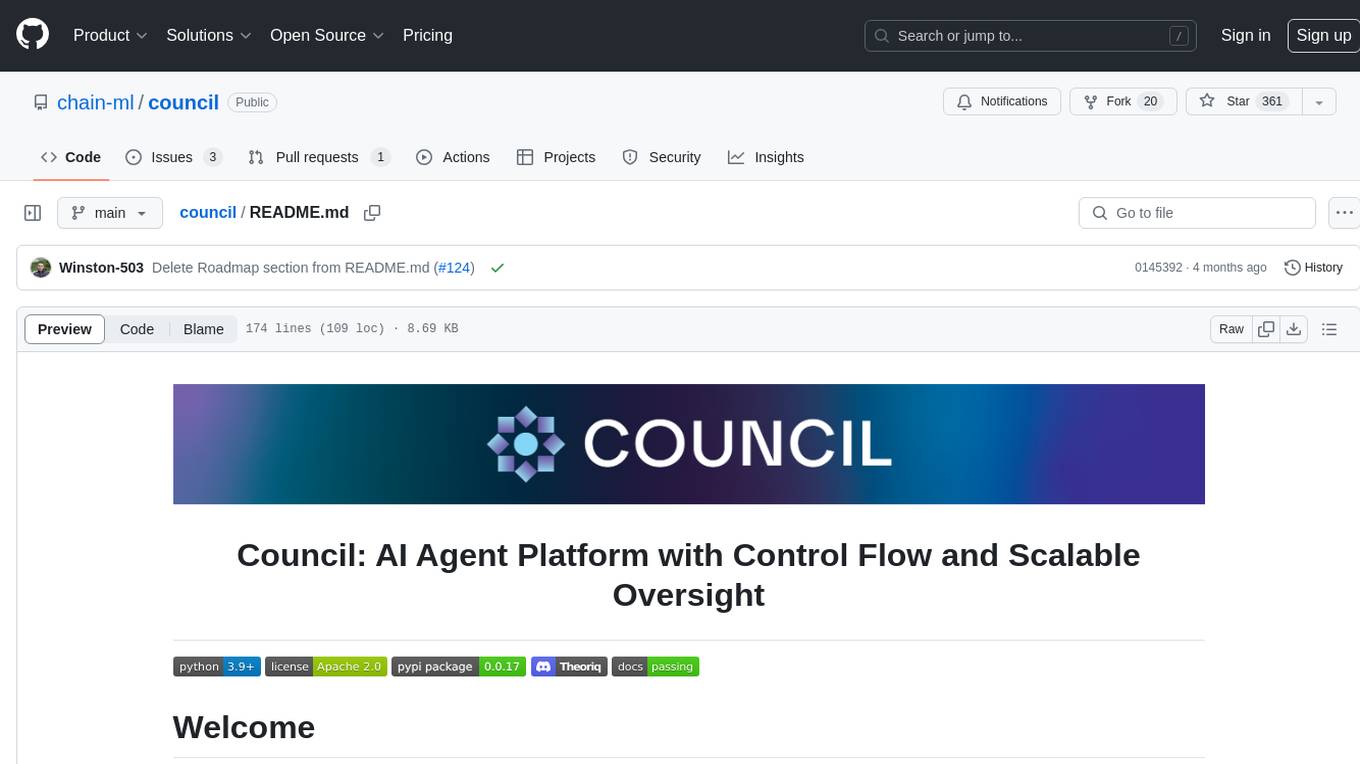
council
Council is an open-source platform designed for the rapid development and deployment of customized generative AI applications using teams of agents. It extends the LLM tool ecosystem by providing advanced control flow and scalable oversight for AI agents. Users can create sophisticated agents with predictable behavior by leveraging Council's powerful approach to control flow using Controllers, Filters, Evaluators, and Budgets. The framework allows for automated routing between agents, comparing, evaluating, and selecting the best results for a task. Council aims to facilitate packaging and deploying agents at scale on multiple platforms while enabling enterprise-grade monitoring and quality control.
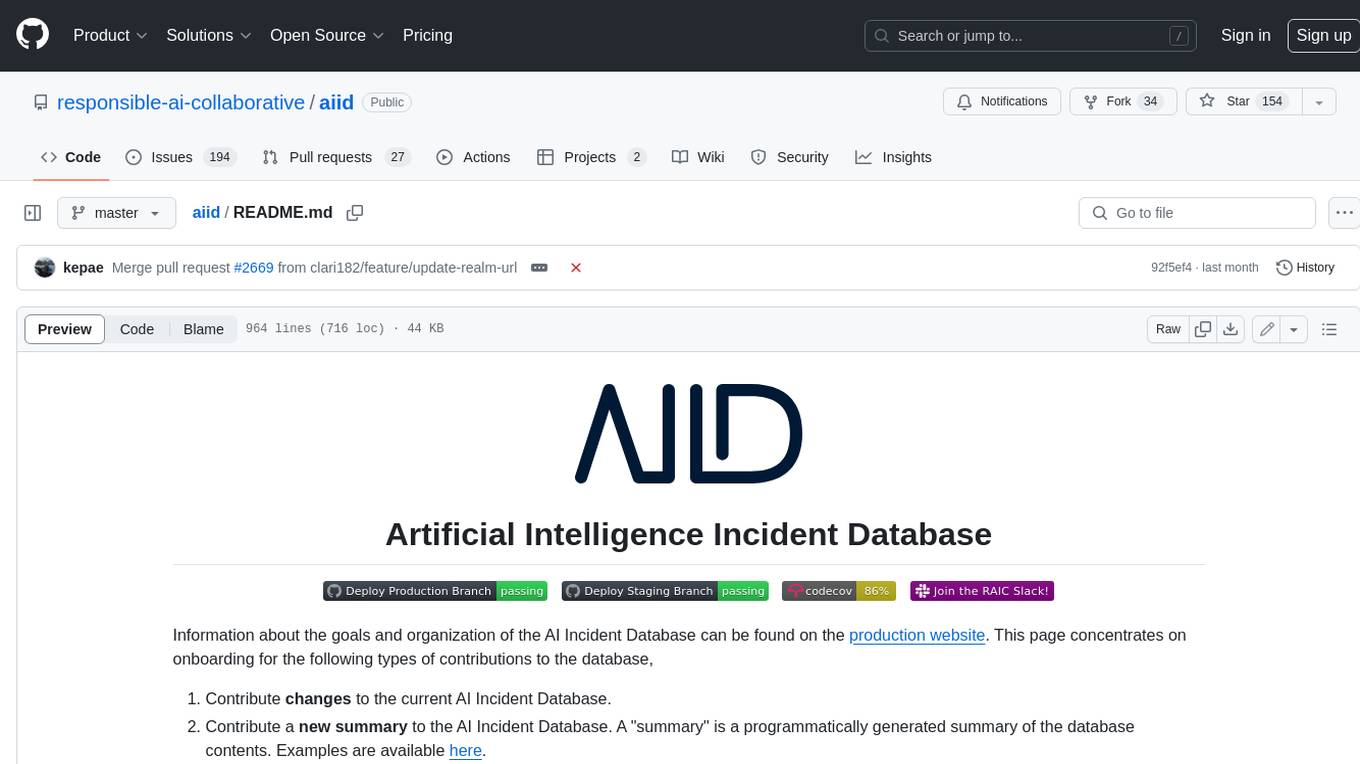
aiid
The Artificial Intelligence Incident Database (AIID) is a collection of incidents involving the development and use of artificial intelligence (AI). The database is designed to help researchers, policymakers, and the public understand the potential risks and benefits of AI, and to inform the development of policies and practices to mitigate the risks and promote the benefits of AI. The AIID is a collaborative project involving researchers from the University of California, Berkeley, the University of Washington, and the University of Toronto.
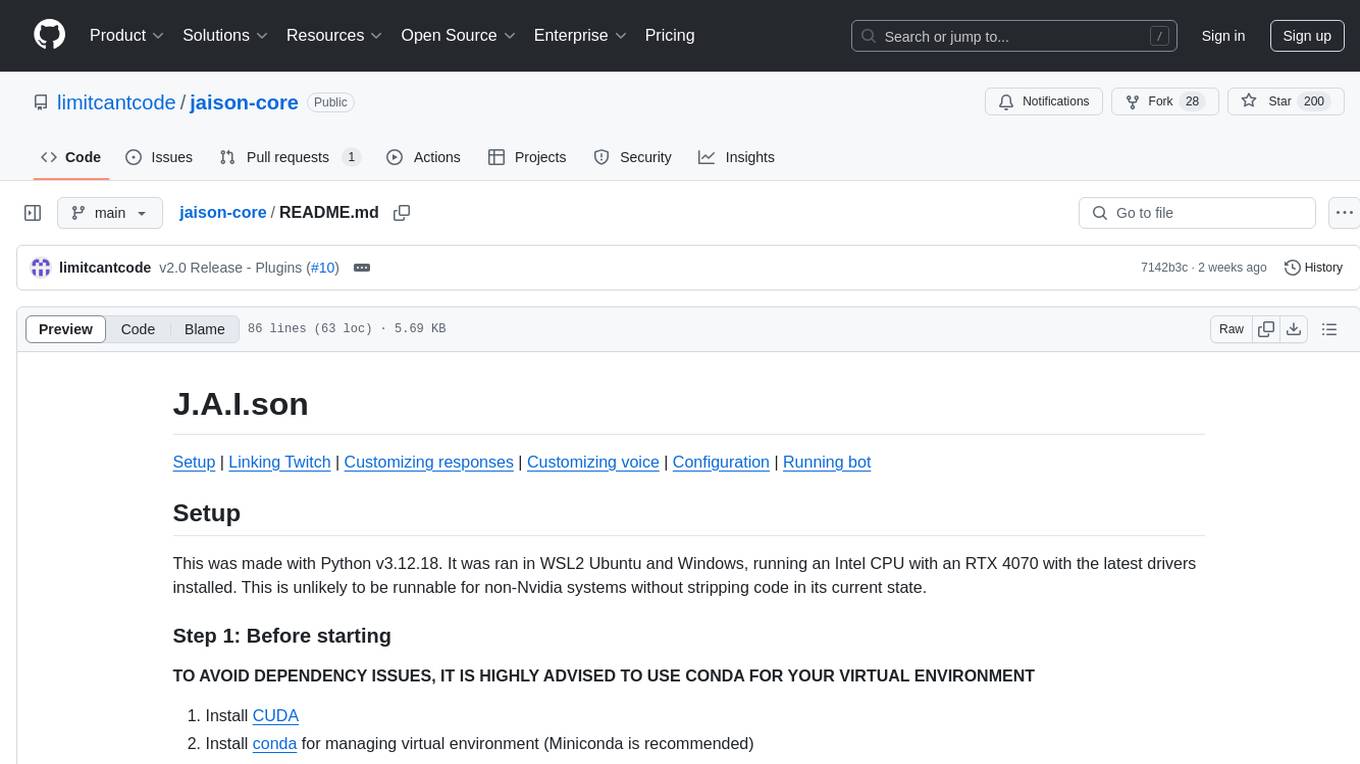
jaison-core
J.A.I.son is a Python project designed for generating responses using various components and applications. It requires specific plugins like STT, T2T, TTSG, and TTSC to function properly. Users can customize responses, voice, and configurations. The project provides a Discord bot, Twitch events and chat integration, and VTube Studio Animation Hotkeyer. It also offers features for managing conversation history, training AI models, and monitoring conversations.
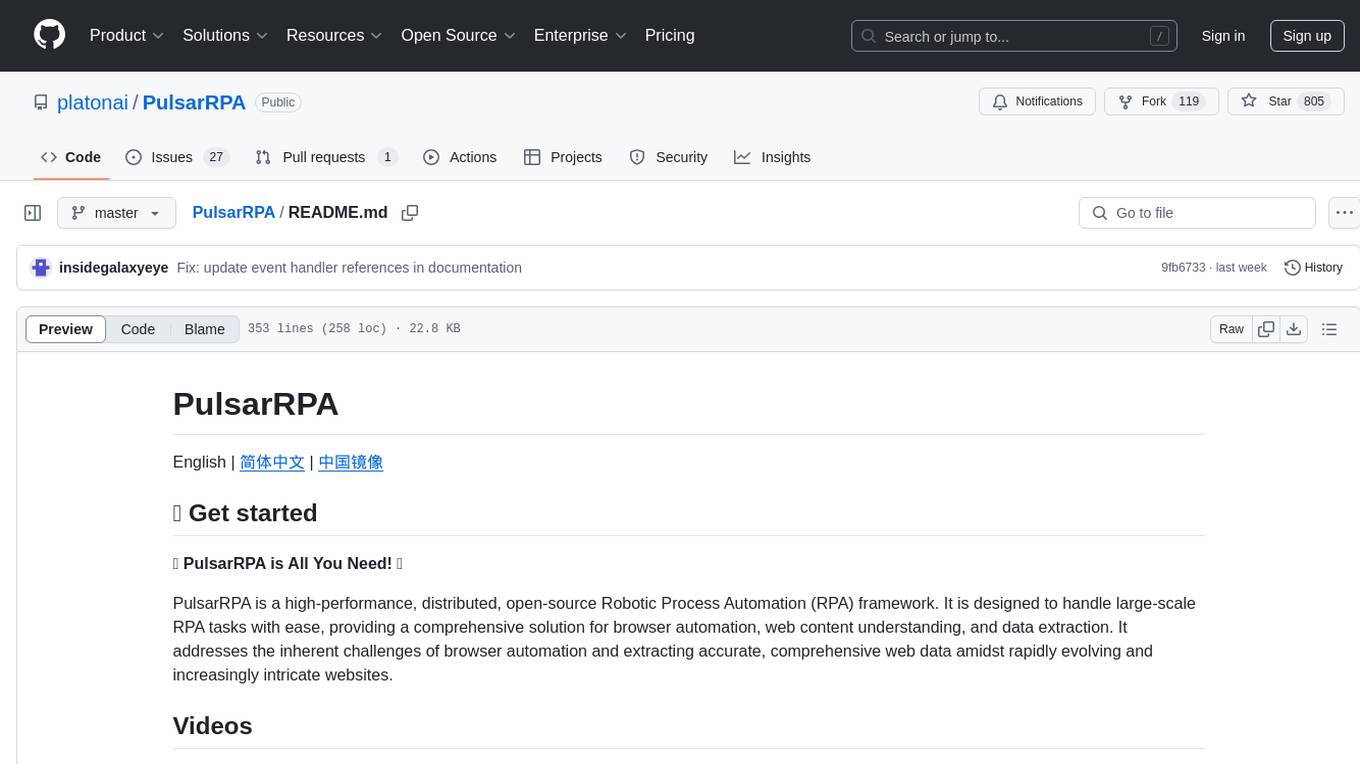
PulsarRPA
PulsarRPA is a high-performance, distributed, open-source Robotic Process Automation (RPA) framework designed to handle large-scale RPA tasks with ease. It provides a comprehensive solution for browser automation, web content understanding, and data extraction. PulsarRPA addresses challenges of browser automation and accurate web data extraction from complex and evolving websites. It incorporates innovative technologies like browser rendering, RPA, intelligent scraping, advanced DOM parsing, and distributed architecture to ensure efficient, accurate, and scalable web data extraction. The tool is open-source, customizable, and supports cutting-edge information extraction technology, making it a preferred solution for large-scale web data extraction.
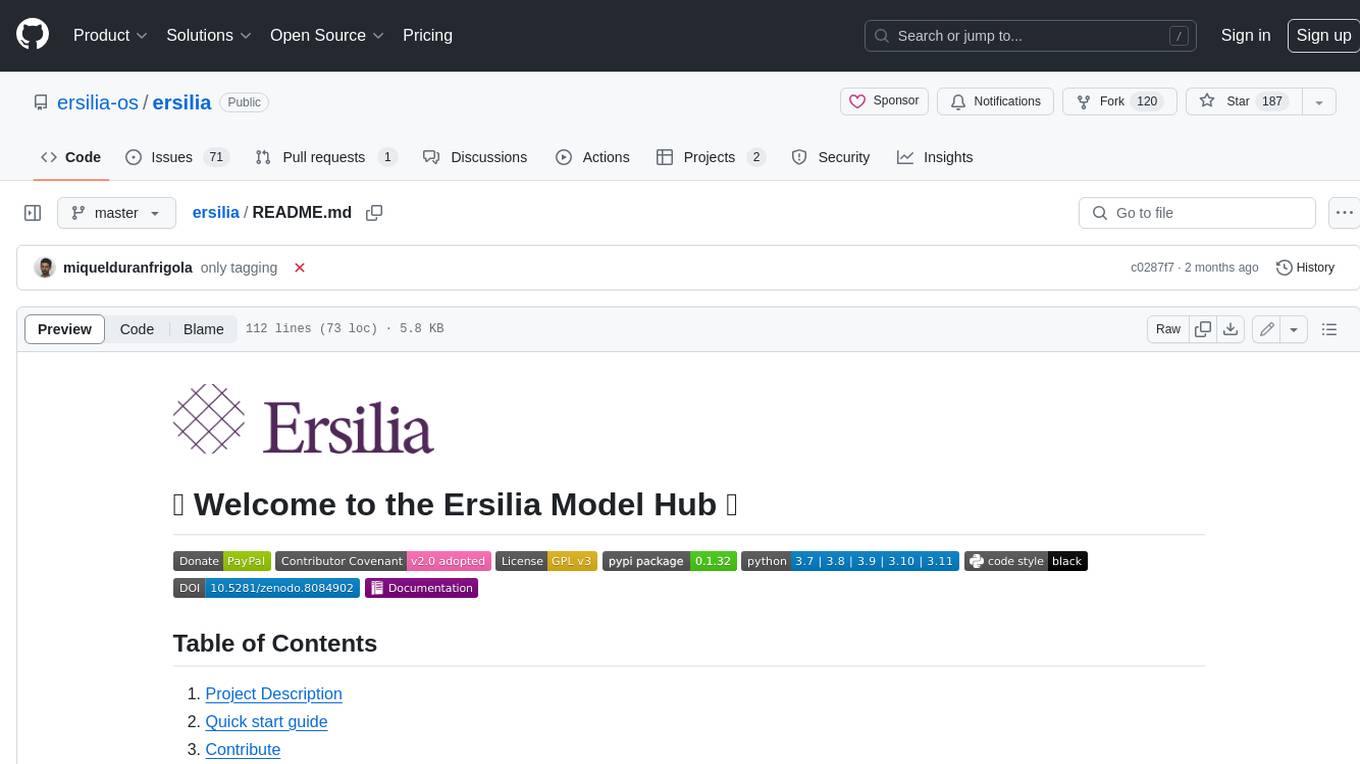
ersilia
The Ersilia Model Hub is a unified platform of pre-trained AI/ML models dedicated to infectious and neglected disease research. It offers an open-source, low-code solution that provides seamless access to AI/ML models for drug discovery. Models housed in the hub come from two sources: published models from literature (with due third-party acknowledgment) and custom models developed by the Ersilia team or contributors.
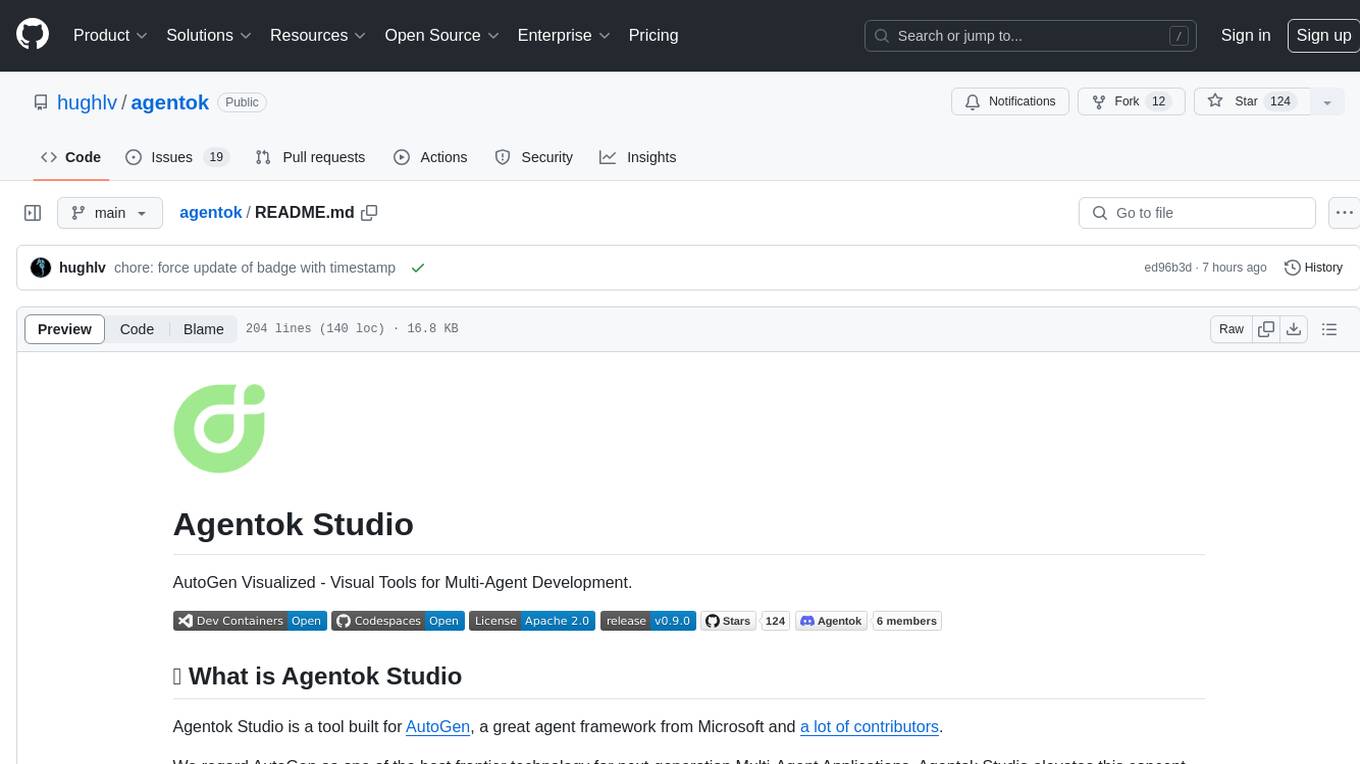
agentok
Agentok Studio is a visual tool built for AutoGen, a cutting-edge agent framework from Microsoft and various contributors. It offers intuitive visual tools to simplify the construction and management of complex agent-based workflows. Users can create workflows visually as graphs, chat with agents, and share flow templates. The tool is designed to streamline the development process for creators and developers working on next-generation Multi-Agent Applications.
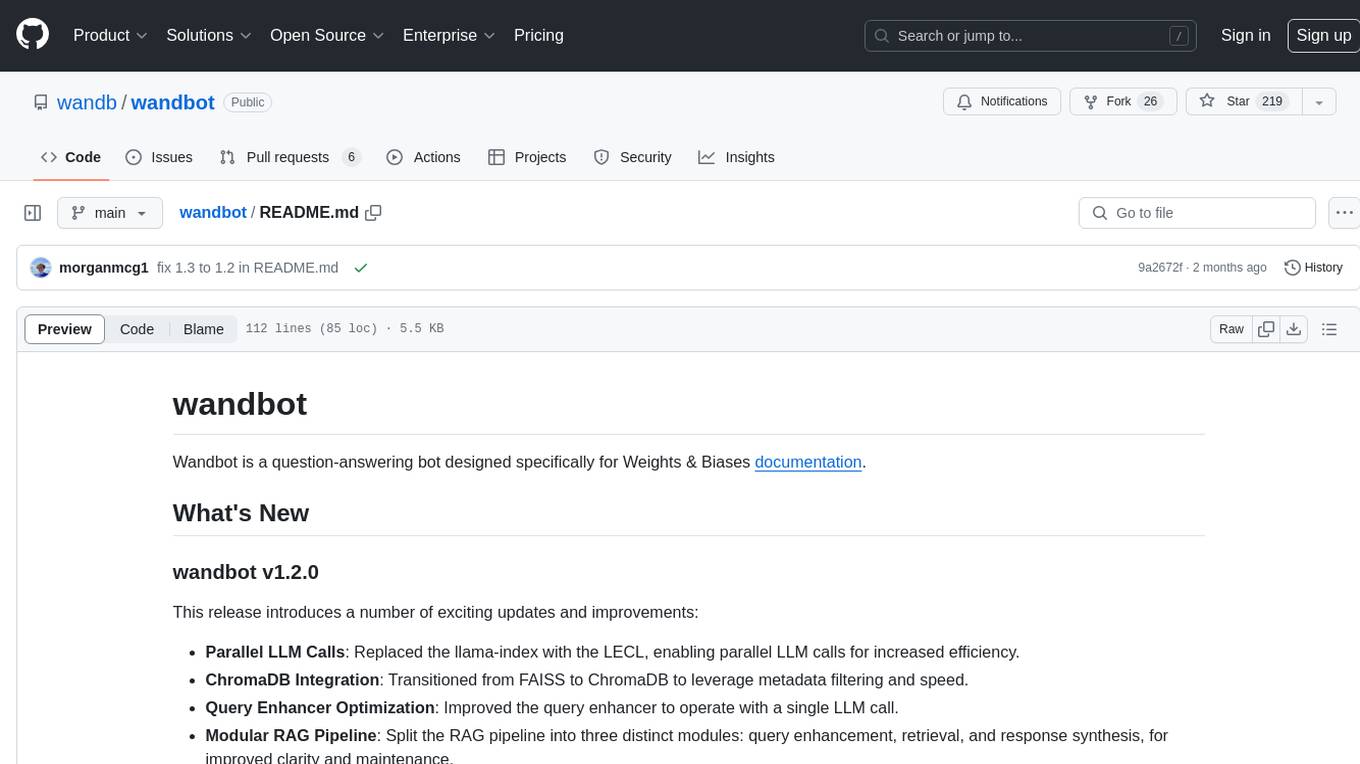
wandbot
Wandbot is a question-answering bot designed for Weights & Biases documentation. It employs Retrieval Augmented Generation with a ChromaDB backend for efficient responses. The bot features periodic data ingestion, integration with Discord and Slack, and performance monitoring through logging. It has a fallback mechanism for model selection and is evaluated based on retrieval accuracy and model-generated responses. The implementation includes creating document embeddings, constructing the Q&A RAGPipeline, model selection, deployment on FastAPI, Discord, and Slack, logging and analysis with Weights & Biases Tables, and performance evaluation.
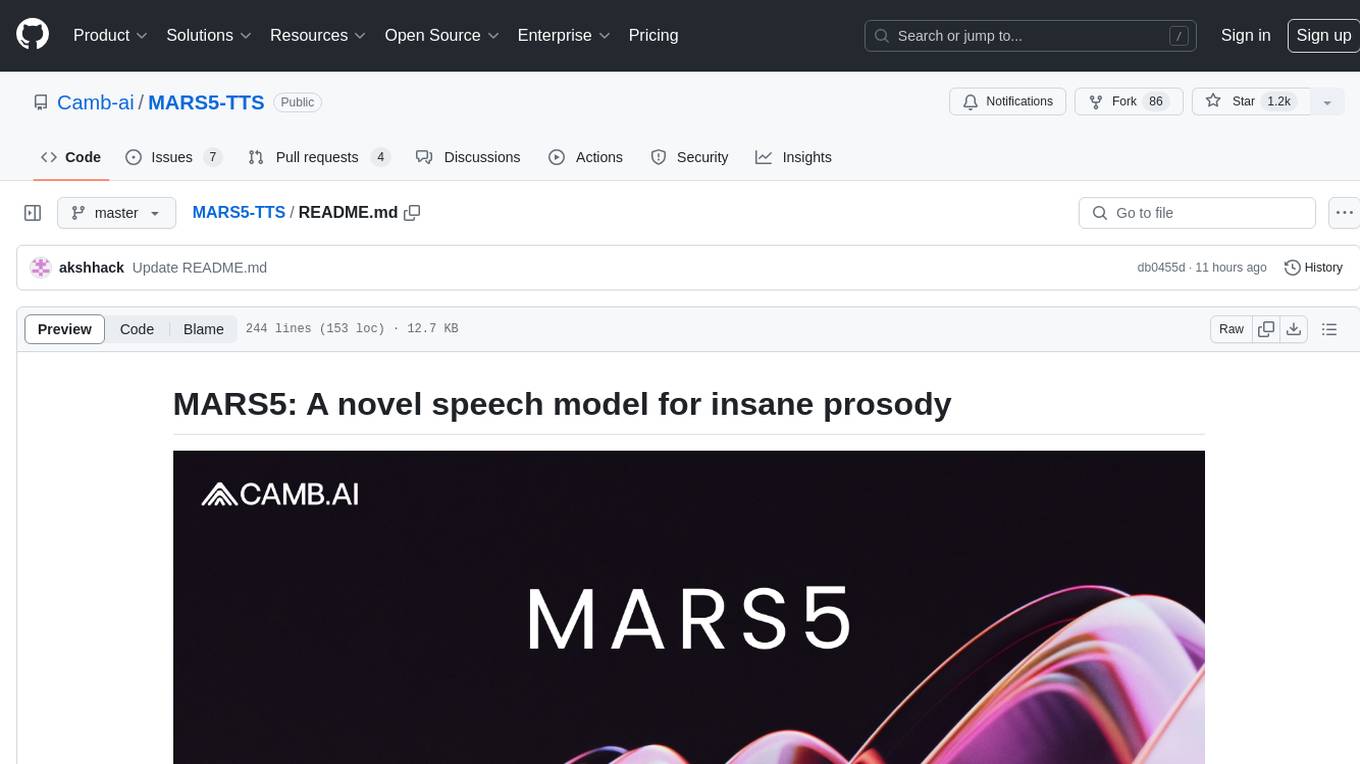
MARS5-TTS
MARS5 is a novel English speech model (TTS) developed by CAMB.AI, featuring a two-stage AR-NAR pipeline with a unique NAR component. The model can generate speech for various scenarios like sports commentary and anime with just 5 seconds of audio and a text snippet. It allows steering prosody using punctuation and capitalization in the transcript. Speaker identity is specified using an audio reference file, enabling 'deep clone' for improved quality. The model can be used via torch.hub or HuggingFace, supporting both shallow and deep cloning for inference. Checkpoints are provided for AR and NAR models, with hardware requirements of 750M+450M params on GPU. Contributions to improve model stability, performance, and reference audio selection are welcome.
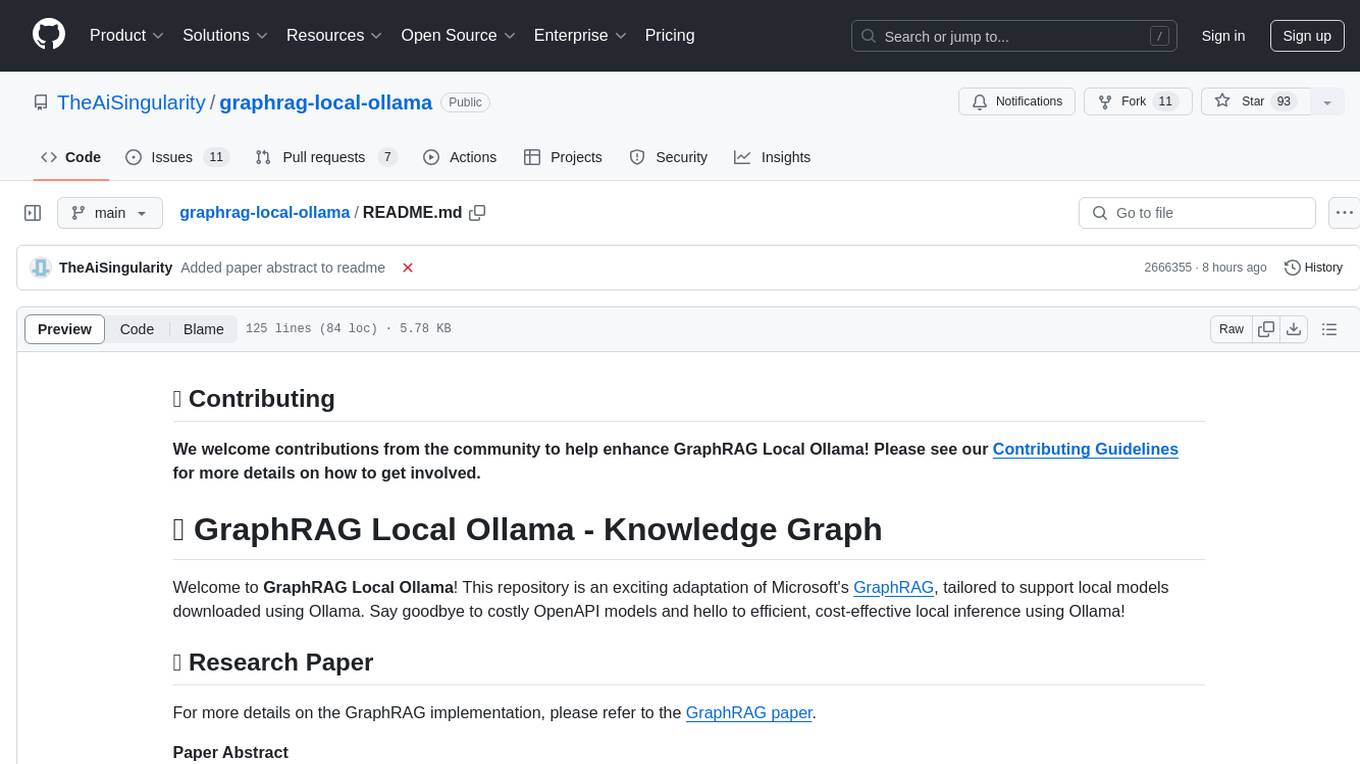
graphrag-local-ollama
GraphRAG Local Ollama is a repository that offers an adaptation of Microsoft's GraphRAG, customized to support local models downloaded using Ollama. It enables users to leverage local models with Ollama for large language models (LLMs) and embeddings, eliminating the need for costly OpenAPI models. The repository provides a simple setup process and allows users to perform question answering over private text corpora by building a graph-based text index and generating community summaries for closely-related entities. GraphRAG Local Ollama aims to improve the comprehensiveness and diversity of generated answers for global sensemaking questions over datasets.
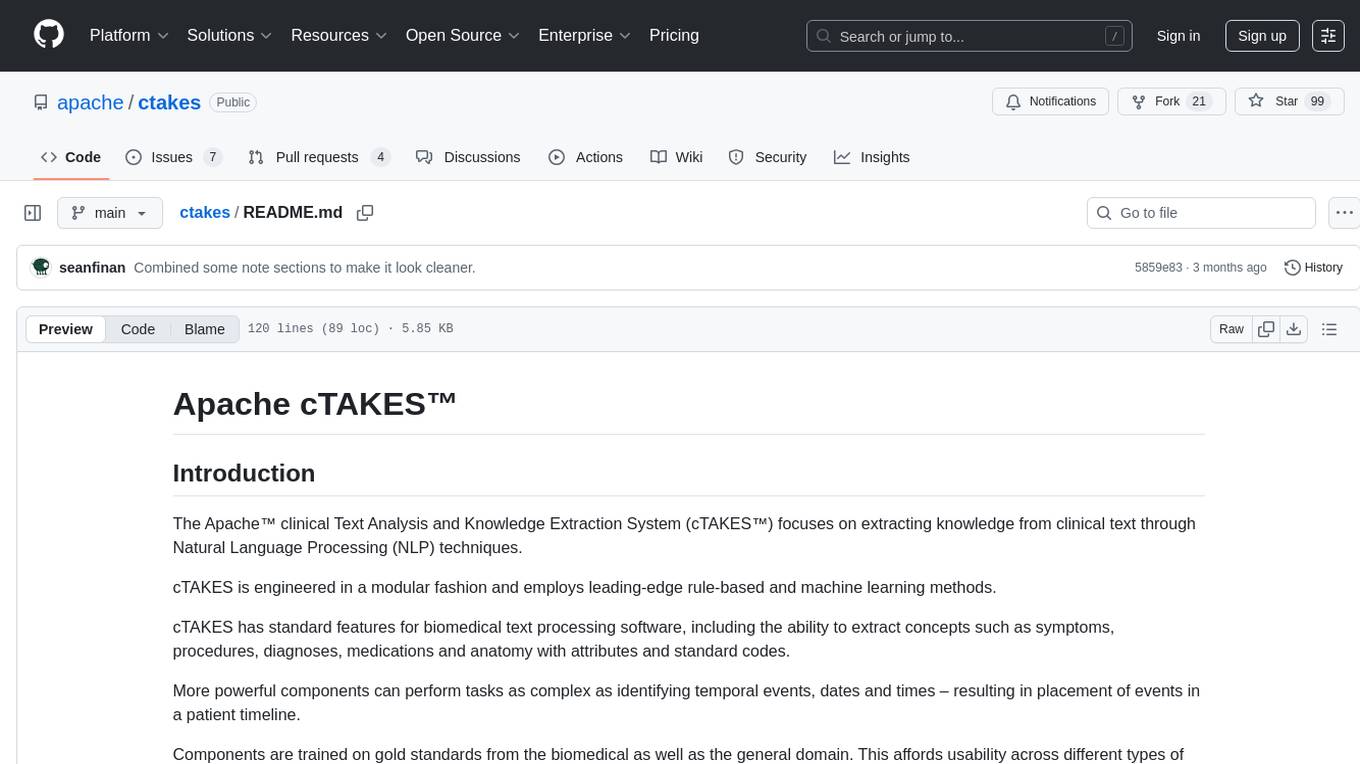
ctakes
Apache cTAKES is a clinical Text Analysis and Knowledge Extraction System that focuses on extracting knowledge from clinical text through Natural Language Processing (NLP) techniques. It is modular and employs rule-based and machine learning methods to extract concepts such as symptoms, procedures, diagnoses, medications, and anatomy with attributes and standard codes. cTAKES can identify temporal events, dates, and times, placing events in a patient timeline. It supports various biomedical text processing tasks and can handle different types of clinical and health-related narratives using multiple data standards. cTAKES is widely used in research initiatives and encourages contributions from professionals, researchers, doctors, and students from diverse backgrounds.
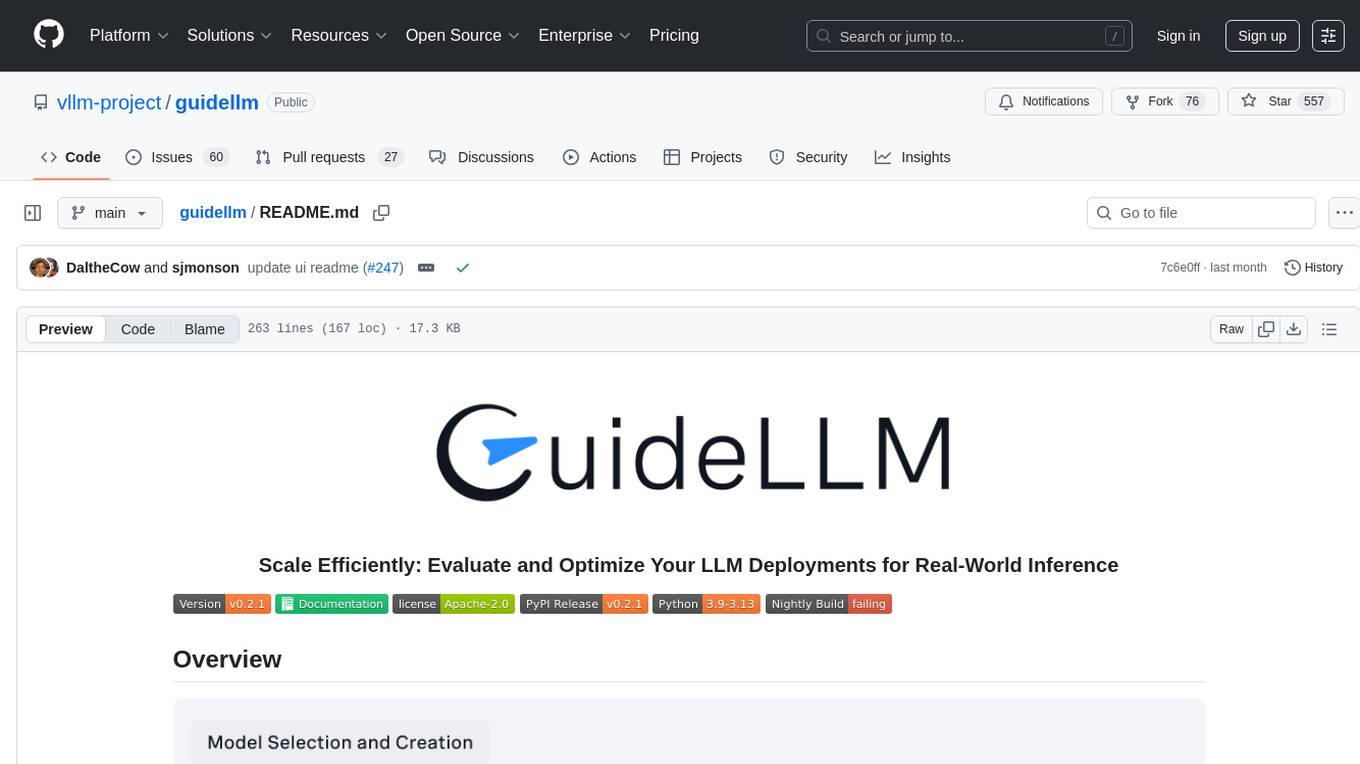
guidellm
GuideLLM is a platform for evaluating and optimizing the deployment of large language models (LLMs). By simulating real-world inference workloads, GuideLLM enables users to assess the performance, resource requirements, and cost implications of deploying LLMs on various hardware configurations. This approach ensures efficient, scalable, and cost-effective LLM inference serving while maintaining high service quality. The tool provides features for performance evaluation, resource optimization, cost estimation, and scalability testing.
For similar tasks

codebase-context-spec
The Codebase Context Specification (CCS) project aims to standardize embedding contextual information within codebases to enhance understanding for both AI and human developers. It introduces a convention similar to `.env` and `.editorconfig` files but focused on documenting code for both AI and humans. By providing structured contextual metadata, collaborative documentation guidelines, and standardized context files, developers can improve code comprehension, collaboration, and development efficiency. The project includes a linter for validating context files and provides guidelines for using the specification with AI assistants. Tooling recommendations suggest creating memory systems, IDE plugins, AI model integrations, and agents for context creation and utilization. Future directions include integration with existing documentation systems, dynamic context generation, and support for explicit context overriding.
For similar jobs

sweep
Sweep is an AI junior developer that turns bugs and feature requests into code changes. It automatically handles developer experience improvements like adding type hints and improving test coverage.

teams-ai
The Teams AI Library is a software development kit (SDK) that helps developers create bots that can interact with Teams and Microsoft 365 applications. It is built on top of the Bot Framework SDK and simplifies the process of developing bots that interact with Teams' artificial intelligence capabilities. The SDK is available for JavaScript/TypeScript, .NET, and Python.

ai-guide
This guide is dedicated to Large Language Models (LLMs) that you can run on your home computer. It assumes your PC is a lower-end, non-gaming setup.

classifai
Supercharge WordPress Content Workflows and Engagement with Artificial Intelligence. Tap into leading cloud-based services like OpenAI, Microsoft Azure AI, Google Gemini and IBM Watson to augment your WordPress-powered websites. Publish content faster while improving SEO performance and increasing audience engagement. ClassifAI integrates Artificial Intelligence and Machine Learning technologies to lighten your workload and eliminate tedious tasks, giving you more time to create original content that matters.

chatbot-ui
Chatbot UI is an open-source AI chat app that allows users to create and deploy their own AI chatbots. It is easy to use and can be customized to fit any need. Chatbot UI is perfect for businesses, developers, and anyone who wants to create a chatbot.

BricksLLM
BricksLLM is a cloud native AI gateway written in Go. Currently, it provides native support for OpenAI, Anthropic, Azure OpenAI and vLLM. BricksLLM aims to provide enterprise level infrastructure that can power any LLM production use cases. Here are some use cases for BricksLLM: * Set LLM usage limits for users on different pricing tiers * Track LLM usage on a per user and per organization basis * Block or redact requests containing PIIs * Improve LLM reliability with failovers, retries and caching * Distribute API keys with rate limits and cost limits for internal development/production use cases * Distribute API keys with rate limits and cost limits for students

uAgents
uAgents is a Python library developed by Fetch.ai that allows for the creation of autonomous AI agents. These agents can perform various tasks on a schedule or take action on various events. uAgents are easy to create and manage, and they are connected to a fast-growing network of other uAgents. They are also secure, with cryptographically secured messages and wallets.

griptape
Griptape is a modular Python framework for building AI-powered applications that securely connect to your enterprise data and APIs. It offers developers the ability to maintain control and flexibility at every step. Griptape's core components include Structures (Agents, Pipelines, and Workflows), Tasks, Tools, Memory (Conversation Memory, Task Memory, and Meta Memory), Drivers (Prompt and Embedding Drivers, Vector Store Drivers, Image Generation Drivers, Image Query Drivers, SQL Drivers, Web Scraper Drivers, and Conversation Memory Drivers), Engines (Query Engines, Extraction Engines, Summary Engines, Image Generation Engines, and Image Query Engines), and additional components (Rulesets, Loaders, Artifacts, Chunkers, and Tokenizers). Griptape enables developers to create AI-powered applications with ease and efficiency.


